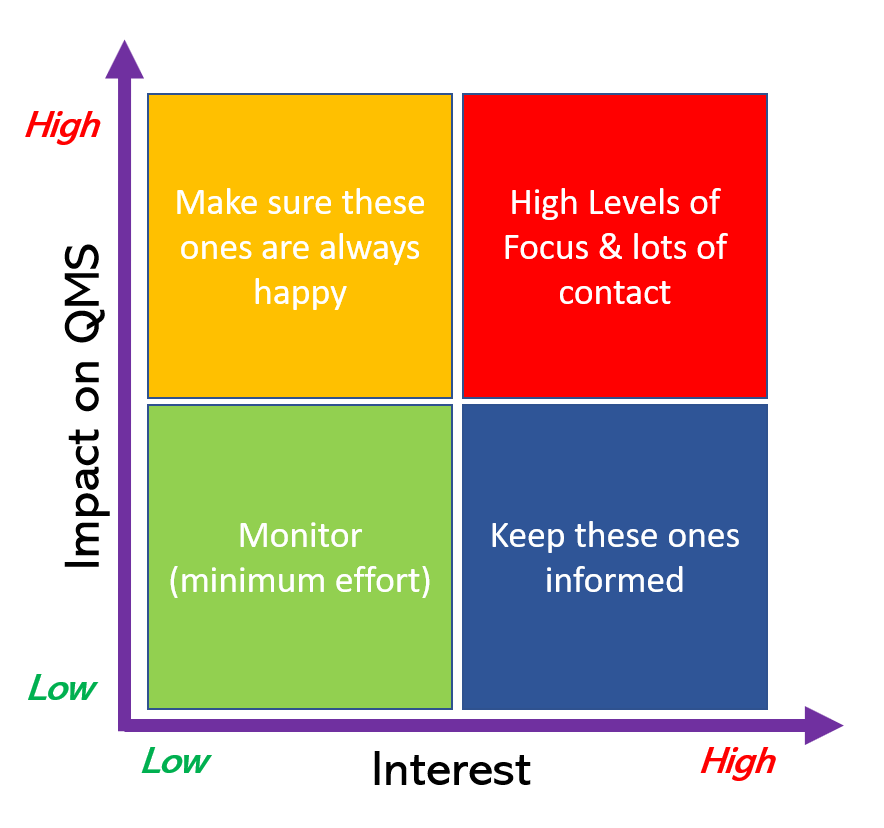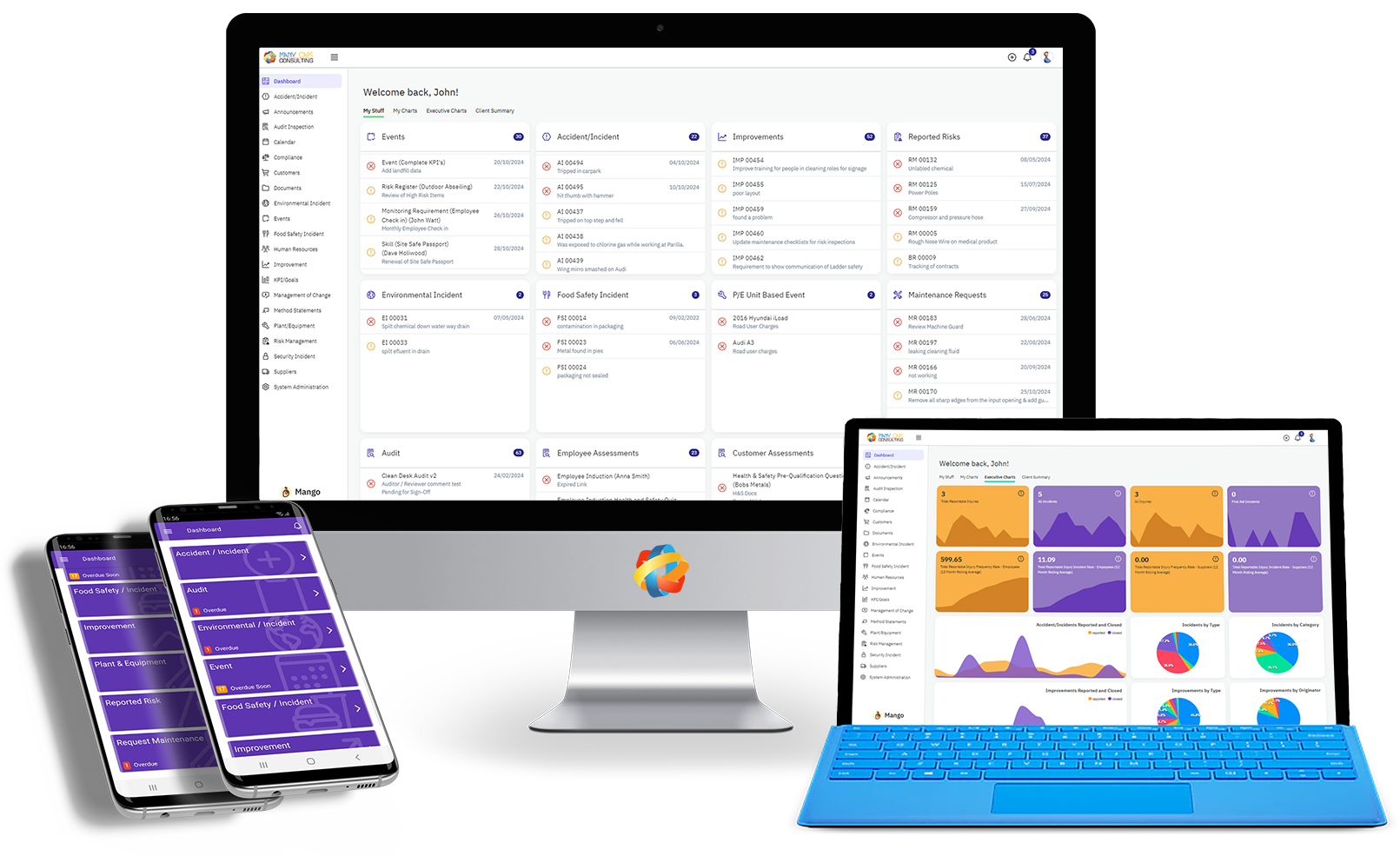Understanding the needs and expectations of workers and other interested parties
Organisations struggle a bit in understanding what the context of the organisation is and why it matters. Think about it like this, how can you build a system to manage your organisational health and safety systems if you don't understand what the various pieces of the puzzle are? The aim of the context of the organisation which is clause 4 within the standard is to help you understand your place in that puzzle and who all has a part in your puzzle, who is going to be impacted and by the decisions you are about to make when you build your ISO45001 system how will your decisions impact them.
Clause 4 of the ISO45001:2018 standard is broken into 4 sections in a bid to make it clearer for the user which are:
- 4.1 Understanding the Organisation & its Context.
- 4.2 Understanding the needs & expectations of workers and other interested parties.
- 4.3 Determining the scope of the OH&S Management System
- 4.4 OH&S Management System.
Now, here is the useful hint of the day, a lot of people would just start at 4.1 and move through the list, don't! It's easier to shuffle it a bit and work through them in the order 4.2, 4.1, 4.4 and finally 4.3 let me explain how they fit, and you'll understand why. Since the clauses are quite large in terms of what you should do to cover them, we'll split this to separate sections, here we will cover 4.2 next we'll cover 4.1 then 4.4 & 4.3.
Why do it in that order?
When we talk about doing it out of sequence of the standard we do get soem inquisative looks and raised eyebrows. If you think about it howveer, if you want to understand the external and internal issues that are relevant to your Occupational Health & Safety system which is what clause 4.1 is about, surely, it's easier to start with understanding exactly what people and groups have needs and expectations on you? From there you can then look at what is relevant and what isn't for clause 4.1. Once you know who needs what from your system and you understand what external and internal issues are goign to be relevant to yoru system only at that point can you actually define the scope of your system. Onc eyou have th escope you can then figure out what processes you need.
Plan for it to take a little bit of time
Clause 4.2 is going to take you a little time to work through. It's not something you should do as a 1-person exercise, it's are area that really should be a group exercise. This is the first test of the involvement and commitment of the serious leadership team (a requirement for ISO certifications). The team that should figure this stuff out is your senior leadership team, why? Simple, it should be built into your strategic set up of the organisation. If understanding how you will ensure you satisfy your various stakeholders (which is effectively the output from this activity) isn't something they are interested in doing then you should stop your ISO45001 implementation right here, it's not going to work as you don't have buy in from the leadership team and they need to own this.
Depending on how engaged they are what work you have done on this previously this can take as little as a few hours, maybe a morning up to about a day to do fully. Plan for that, if you do it quicker great, just make sure you do it fully.
Understanding who the interested parties are
The clause separates out workers and interested parties in the clause, really to ensure that you factor them in, strange as it sounds organisations still fail to consider them. The approach you take however is still pretty much the same with workers and other interested parties. In theory the order you do it in doesn't matter, in practice however starting with understanding what your workers need will drive a lot of the right answers for the rest of the parties.
By separating them out you invariably find conflicting interests between the workers and other interested parties, in case there was any doubt, the interests of your workers should always be the priority.
Interested parties are, as the name suggests, anyone who basically has interest in your company and what you do, in this case specifically with a health and safety bias. i.e. the stakeholders which would include your employees. That means you should be thinking about quite a few groups, for example there are the workers, your customers, suppliers, partners, government agencies, any contractors that you use, of course you also need to think about the general public with respect to the health and safety elements of your organisational activities. Of course that may not be the exhaustive list for your organisation. Really encourage the group to rack their brains on this one, it'll surprise you when you see the list!
You need to consider if each of these names or groups actually has an impact or possibly could have an impact on your Occupational Health & Safety Management System (and to an extent your business) or way of working and what that could be, do you need to do anything as a result?
Once you have that list add next to each name or group what their needs are and then what their expectations of the company are. What do each of them need from you as an organisation?
I like to do this by creating a sheet of paper or on a spreadsheet that's projected up where we can have it set up in columns as follows:
- Group Name e.g. workers – think about all the different groups of worker, Safety Inspectors and so on
- Relationship to the organisation (e.g. customer, employee, supplier, partner, influence and so on)
- Impact now - Low, Medium & high type of impact,
- Needs / Expectations
- Actions Required to ensure needs are met
- Ranking (from grid)
By plotting your interested parties onto a grid like the one shown here you can create a good understanding of how much they impact your Occupational Health & Safety management System (OHSMS) and how much time you need to put into managing them.
There result should be a table like that shown below.
| Organisation / Group | Relationship | Impact | Needs / Expectations | Actions Required | Ranking |
| Site worker – non machine based | Worker | High | Safe working environment. Tooling, equipment, training. |
Training plan in place, PPE supply & monitoring, Health monitoring Documented processes | High / High |
| Office based workers | Worker | High | Safe working environment. Training | Training plan in place Health monitoring Ergonomic checks Documented processes | High / High |
| Joe Bloggs Inc | Customer | Medium |
Product delivered on time Supplier meets all safety requirements |
Clarity of delivery expectations Agreed safety specifications. | Low / High |
| General Public | Public | Medium | Company operates in a safe manner | Communication plans in place anytime dealing with public. Safety Plans in place with lots of clear visual information when interacting with public. Consultation porcess clear and documented. | Low / High |
By taking the time to do these steps you should be able to not only clearly understand who impacts your Occupational Health & Safety Management System, and how, but also create plans on what you need to do to manage or avoid those impacts.
Of course, another by-product of this is the ability to demonstrate this to anyone who wants to audit or understand it.
You now have a great understanding of all of th eintersted parties within yoru Occupational Health & Safety System , with that you can then start to understand the external & internal issues you need to consider.
Copyright
© Many Caps Consulting | All Rights Reserved
By accepting you will be accessing a service provided by a third-party external to https://www.test.manycaps.com/






Comments